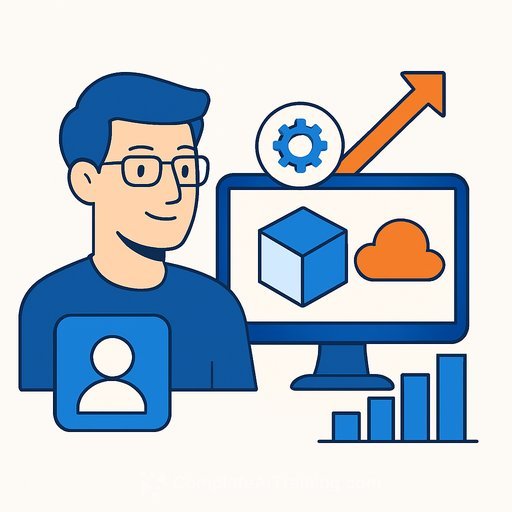How Investors Are Reacting To PTC Integrating Real-Time AI Into Onshape
PTC rolled out new AI enhancements to its cloud-native Onshape CAD and product data management platform in early October 2025. The headline feature: a real-time AI Advisor, integrated directly in the design workspace and powered by Amazon Bedrock. For product development teams, this brings guidance, context, and automation closer to where decisions are made.
For investors, the move signals a push to drive platform adoption, improve retention, and increase contract value. For operators, it's a nudge to rethink workflows-less tool-switching, faster feedback, fewer preventable errors.
What Changed Inside Onshape
- Real-time AI inside the main modeling environment-no separate window, no context loss.
- Faster iteration loops via prompts and suggestions grounded in design and PDM context.
- Practical use cases: parameter suggestions, feature troubleshooting, design rule checks, BOM sanity checks, and instant answers from model history.
If you're leading a PD team, this means less friction between ideation, modeling, and verification. It also makes onboarding smoother as new engineers get guidance without blocking seniors.
Onshape product page | Amazon Bedrock overview
Why Investors Care
PTC's thesis is straightforward: win the cloud-native CAD/PDM category by embedding AI where work happens. Tighter integration can increase usage, compress time-to-value, and support higher attach and upsell rates. That usually leads to higher net retention and more durable ARR.
The flip side is competition. Every major software vendor is building similar assistants. If usage doesn't convert to paid expansion-or if cost-to-serve rises-margin and market share could take a hit.
ServiceMax Is The Tell
Recent upgrades to ServiceMax added agentic AI, echoing Onshape's direction. This matters because ServiceMax is a cross-sell priority. Strong execution across both products points to higher retention and bigger deals; missteps could show up as integration hiccups or churn in key segments.
The Numbers Behind The Narrative
- Target by 2028: $3.3B revenue and $814.8M earnings.
- Implied path: ~9.6% yearly revenue growth and a $302.1M earnings lift from the current $512.7M.
- Model-based fair value: $224.68 per share, implying roughly 10% upside from the current price.
These targets assume AI-led adoption and cross-sell momentum continue while operating costs stay in check. Any slowdown in attach rates or a spike in support costs could compress that upside.
What Product Development Leaders Can Do Now
- Run a 60-90 day pilot: pick 2-3 CAD workflows (e.g., complex surfacing, assembly checks, change requests). Measure cycle time, rework, and error rates.
- Define prompt standards: document go-to prompts for design checks, feature fixes, and PDM queries. Share inside the team so wins compound.
- Close the data loop: ensure access to the right design history, part libraries, and standards so the AI Advisor has enough context to be useful.
- Set guardrails: IP handling, version control, and approval steps. Keep human-in-the-loop for critical tolerances and safety-related features.
- Track ROI with simple metrics: ECO churn, review cycles per release, late-stage defect rate, and time-to-first-prototype.
Signals To Watch (Investors and Operators)
- Onshape seat growth and AI feature usage (daily/weekly active users inside the AI workflow).
- Attach and expansion rates for ServiceMax alongside Onshape.
- Gross margin trend vs. rising AI inference costs.
- Net revenue retention and churn in design-led accounts.
- Management commentary on AI-driven upsell mix and payback periods.
Community Views Are Split
Community fair value estimates vary widely-from around US$160 to well above US$200,000-reflecting very different assumptions about AI adoption speed, competitive response, and cost structure. The spread says more about uncertainty than precision. Build your own model and stress-test it with realistic adoption and cost curves.
Bottom Line
Embedding real-time AI inside Onshape is a practical step that can improve daily engineering work while strengthening PTC's platform story. The path from usage to profitable growth still depends on clean integrations, clear ROI for teams, and disciplined cost control. If those hold, the 2028 targets look reachable; if not, the upside narrows fast.
Disclaimer: This article is for information only and is not financial advice. Do your own research and consider your objectives and financial situation before making any investment decisions. Analysis may not reflect the latest company announcements.
Your membership also unlocks:






